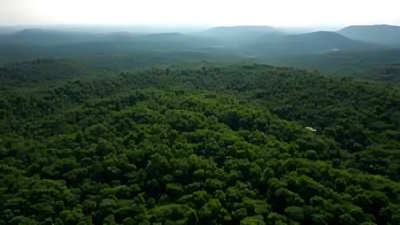Supreme Court flags illegal mining, reserves verdict on single definition of Aravalis | India News

NEW DELHI: Supreme Court on Wednesday said rampant illegal mining in Aravali range, the natural barrier spread across Haryana, Rajasthan, Gujarat and Delhi that’s preventing desertification of Gangetic plains, is causing immense damage to the sensitive eco-system. The court reserved verdict on the issue of a uniform definition of what the Aravali range is. Amicus curiae and senior advocate K Parameshwar told a bench of Chief Justice B R Gavai and Justices K Vinod Chandran and N V Anjaria that the report submitted by the expert committee set up by the SC in May last year on this issue appears to be oriented towards how to allow mining in the Aravalis rather than focusing on stringent measures to protect it.Need to evolve framework for sustainable use: Panel The entire Aravali Range must be protected as one geographical and morphological entity along with its eco-system and the protective measures cannot be allowed to be varied from state to state. He said along with conservation of Aravali range, restoration of its pristine form is equally important,” Parameshwar said, adding that he must not be understood to advocate blanket ban on mining activities. The bench said a complete ban always leads to rampant illegal mining and we have seen how a hillock in Aravali was reduced to a column and how a road was illegally built in Nuh district for clandestine transportation of mined minerals from Haryana to Rajasthan. Additional solicitor general Aishwarya Bhati, while complimenting the amicus for his zealous approach towards protection of the Aravali Range, said the SC-appointed committee has addressed every concern of the amicus while giving stringent guidelines for regulated mining under the principle of sustainable development. The bench agreed with her. The committee in its report said that all hillocks have a height of over 100m (from mean sea level) and these should be protected along with its slopes. “Keeping in view the immense ecological and environmental significance of Aravalli hills and ranges, owing to their rich biodiversity and the wide range of ecosystem services they provide, such as groundwater recharge, regulation of desertification, and moderation of the regional microclimate, it becomes imperative to protect and conserve the area from further degradation,” it said. “Core/inviolate areas – protected forests and tiger reserves and one km from their boundaries, eco-sensitive zones, afforestation areas and 500m from Ramsar sites and wetlands – may be designated in the Aravali hills and ranges for prohibiting mining in them,” the committee said. However, the committee flagged that the Aravali range contains well-known repositories of base metals such as lead, zinc, and copper, as well as precious and strategic minerals including gold and tungsten. “In addition, the Aravali-Delhi system has been identified as having significant potential for critical minerals such as tin, graphite, molybdenum, niobium, nickel, lithium, and rare earth elements (REEs), all of which are of growing strategic relevance for energy transition, high-technology manufacturing, and national security,” it said. The committee opined that while the ecological and environmental integrity of the Aravali Hills and Ranges must remain the foremost priority, it is also necessary to evolve a framework that enables sustainable exploitation of critical, strategic and atomic minerals located within the region. “In view of the ecological significance of the Aravali hills and ranges, the committee recommends that the following environmental safeguards and regulatory measures be adopted by respective state governments to encourage systematic, sustainable, and environmentally friendly mining while effectively preventing illegal mining using modern and information technology tools,” it said.





